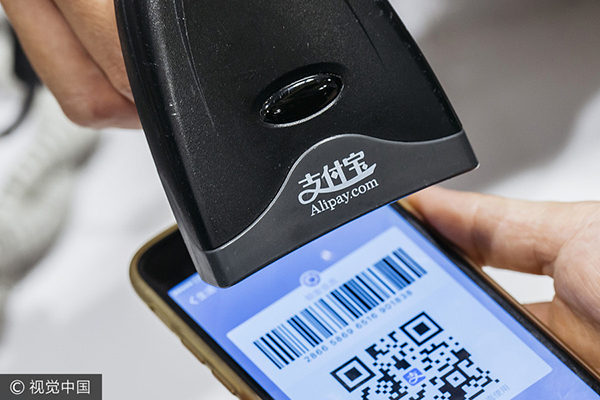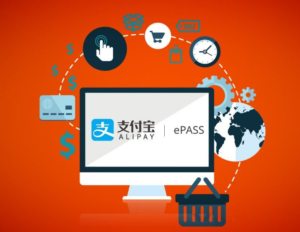By Ankita Tyagi, Founder & Principal Analyst, FSInnovate Dec 16, 2020
For decades, the payments space was associated with facilitating transactions between customers and their financial service provider, and nothing more. But, solution providers such as Alipay showed that it was possible to merge e-commerce with payments and obliterate any perceived boundaries between payments and sophisticated financial functions across any vertical. Visa and Mastercard took note, shed their old skin, and brought their own flavors of APIs to the mix.

Fair to say, the payment industry owes a lot to these titans as they’ve forged the way for many others to follow suit through their agile, customer-centric solutions.
Since its inception in 2004, Alipay has drastically upended the payments world through its platform’s seamless integration across various third-party services. It was initially launched for e-commerce, but now it’s the preferred mode of payment in many industries, including restaurants, hypermarkets, transportation, and hospitality. It can also handle customer requests such as booking a doctor’s appointment, paying for utilities, checking social security information, filing for taxes, paying at gas stations, and traffic tickets.
How does it work?

It’s a smartphone application (works on Android, iOS, and Windows) that issues and receives payments by generating and reading unique QR codes. Customers pay by scanning a QR code issued by the company upon receiving services or the seller’s product. Most retailers in China have readers/scanners and accept Alipay as well as WeChat – another popular communication and payment platform.
When a customer hits ‘Pay’, a unique QR code appears on their phone screen. The scanner reads the code and the transaction is approved. Alipay also facilitates person-to-person (P2P) payments, which work even without a reader. All one needs is a smartphone and an Alipay account.
Whom does it serve?
Alipay was created in response to e-commerce market needs, but after successfully diversifying across a range of services, the company now envisions itself as a purveyor of technology that can facilitate payment (…and subsequently banking – a grand, hidden objective) in any part of the world.
As of November 2019, Alipay launched a service that would allow foreign travelers in China to use its service even without a bank account in mainland China. Parent company Ant Financial launched a version of the Alipay app, which can support international debit and credit cards. After downloading Alipay on Android or iOS, users can register for an international version of that app via their mobile number. Users can put money on a pre-paid virtual card and begin using Alipay across China.

Alipay is also facilitating payment for Chinese travelers who are touted as the most frequent and active travelers globally. In Spain, Alipay is integrated into BBVA’s API. As of June 2019, Alipay had tripled its merchant base amidst growing Chinese tourism to European countries. It allows European markets to tap into the wallets of the highly affluent middle and upper class.
Unfortunately, COVID-19 has derailed some of Alipay’s ambitious plans, but once normalcy resumes, most likely by Q2 2021, it will be interesting to see if Alipay continues its successful streak across the EU. Trade wars and new trans-border dynamics have made international payments one of the diciest of propositions. No one really knows which way things will go. 2021 will witness consolidation in retail banking and the payment space. It will be interesting to see if any of these merged players will cut into Alipay’s profits. P2P and e-commerce/retail hybrid solutions are expected to be the new shiny objects as well.
How Alipay changed the game with APIs?
Alipay has about 1,500 Application Platform Interfaces (APIs). Please refer to API Types and which ones matter for Financial Services to understand what an API is. Alipay’s APIs simplify the management of online transactions. Each call to action by a customer is accomplished through its own API. Ultimately, it’s the communication between all these that provides a task flow to users.

Besides Alipay’s rich library of highly agile APIs, its technology is also used to provide a wide range of personal finance services such as money market investment, insurance, credit rating, personal credit, and SMB banking. Alipay claims to have 1.3 billion users annually as of March 2020 and operates in 55 countries, 29 of which are in Europe according to CNBC. Alipay set up a money market fund for shoppers with interest rates on these funds higher than those offered by a traditional bank. Alipay was also able to expand beyond payments and emerge into a full-fledged FinServ company.
Alipay serves as a fantastic example of how bold innovation and a novel approach can transform an entire industry. Alipay is a pioneer and, even without international backing, has bolstered China’s position in the global financial services landscape. Historically, the US and Britain dominated this space; however, given an unusually tumultuous 2020 in diplomatic relations, 2021 might be a different story for Alipay. Time will tell.
Visa – Not resting on its laurels
Visa is a renowned global payment processing company, and it would be silly to harp on how they have shaped (along with Mastercard) global electronic fund transfer since they are payments. However, it would be foolish to assume that this is a sleeping giant, resting on its laurels. Visa’s new initiative called Visa Next (launched in April 2019, still in Beta), includes a set of open APIs with a suite of tools and documentation designed to let third-party apps create their own digital Visa card as well as manage new services.

These APIs are unlike those often associated with payment and allow creation of new digital card accounts on demand, tokenization accounts for e-commerce and mobile wallets, and to configure rules around digital card use and card sharing. Like Alipay’s motive for bringing its brand of payment to other countries, Visa hopes its clients and partners provide customers an option to turn their wallet balance into a digital VISA card and begin using it in 200+ countries and territories. Visa is also trying to expand on cloud-based payment products and services.
Visa Developer, an initiative slightly older (launched in 2016) offers third-party solution providers the ability to sift through hundreds of commerce-related APIs. It was launched to overhaul the brand’s retail payment network into an open platform with the ability to incite innovation in commerce by providing application developers access to proprietary technology and indirectly, to expand Visa’s reach through its core technology.
With Visa Developer, the brand is making its mobile commerce technology available to non-affiliated third parties. It has tools such as secure-in-service payment, currency conversion, P2P payments, and account holder information. Its open APIs fall into three core categories- payment, general services, risk, and trials.
Honorable mention: Mastercard
Like Visa, Mastercard has also invested in APIs to open-up, standardize, and simplify access to its services. The objective is to deliver value through different add-ons around payment – digital wallet, enhanced loyalty, pay with points, pay with installments, pay at table, controls and alerts, contextual offers, etc. It is offering APIs in three core categories- security, data, and payments. There are 38 APIs listed on Mastercard’s Developer page.

Suffice to say, today’s payment world is not just about branding; it’s about reach – across countries, currencies, services, retailers, and integration with just about every third-party app. It’s about taking a part of customer wallet, through strategic partnerships and open API, rather than aggressive marketing. The objective is the same: to capture greater market share with as little fuss as possible. Equally interesting to note is that these payment networks are also passing on the reins of partial service management to third parties. Their main interest lies in data control (as much as possible under existing conditions) and diversifying services.
Looking ahead
The pandemic has infused a sense of urgency around adoption of contactless payments. Alipay, Visa, and Mastercard (and mobile wallets) took the cue and capitalized on COVID-19 infused momentum to attract users as they positioned contactless to encourage safe distancing. 2020 worked out well for them, but when things return to normal in Q2 2021, it will be interesting to see rectified (less bloated) adoption rates. Neither of these payment giants has highlighted real plus points of contactless payments – that they are secure means to transact since they use Near Field Communication (NFC), Bluetooth Low Energy (BLE), and QR codes over exchanging personal information over wi-fi. This was always the essence, but unfortunately, it got lost in pandemic hype.
Real-Time Payments (RTP) will be an equally interesting space to watch, and it will be interesting to see how these three industry leaders pass cost savings to end-users while facilitating RTP. Not an easy proposition, but if anyone can accomplish this, it’s these three. Cloud computing is also reaching maturity, and just like APIs, Alipay, Visa, and Mastercard have their hands on the pulse of cloud computing. We expect to hear more from them on this by Q3 2021.

Never has the phrase ‘stay tuned’ been more apropos.
Ankita Tyagi is Founder & Principal Analyst at FSInnovate, a Boston-based research, advisory, and consulting firm covering emerging trends in advanced technology, artificial intelligence, and the internet of things across the financial services sector.

